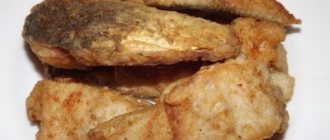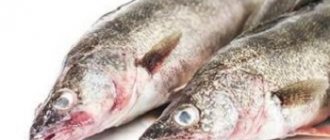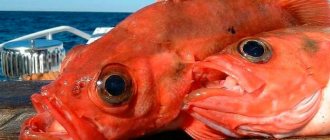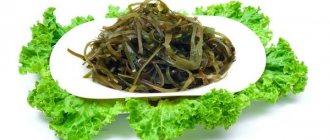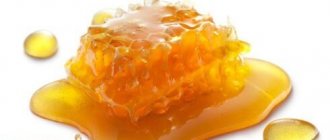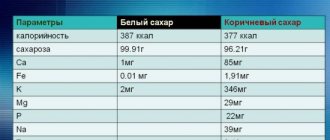Salmon is a predatory fish of the Salmon family, with dense scales of a silvery color. During the spawning period, the color of the fish becomes dark gray, and orange and red spots appear on the sides and head. Most salmon species are anadromous - they are born in fresh water, migrate to salt water sources, and return to fresh water to spawn.
Cooked salmon meat is quite fatty, but not high in calories, has a very delicate and juicy taste, is low in bone and is colored pink-red. The calorie content of salmon varies depending on the type of fish; for example, chicken salmon is much fattier and higher in calories than salmon. In nature, there are 23 species of salmon, including chum salmon, salmon, nelma, pink salmon, coho salmon and trout, which are most often used in cooking.
Regardless of how many calories are in salmon, this tasty and rather expensive fish is widely used in many dietary diets.
Description and types of salmon
The delicious meat of marine life has been popular since ancient times. The northern peoples especially appreciated him. Salmon was on the table of the Vikings, and fish dishes were regularly eaten at the court of British and Scottish monarchs. Seafood is very popular in Japan. Many dishes are prepared from red fish in the East. The Japanese know how great the benefits of salmon fat are, so this seafood is included in the baby food menu.
How this type of fish was prepared in the old days:
- In the summer, due to the impossibility of storing fish for a long time, it was cooked immediately. Usually fish were stewed, fried and boiled. They were often used to make soup with vegetables.
- There are two ways to prepare it for the winter: it was smoked and salted. To keep seafood longer, the so-called cold smoking method is usually used.
Salmon is a collective concept. The family includes different types of fish. Each of them has its own characteristic features.
The Salmon subfamily can be divided into two huge groups: the Pacific, which are also wild and true or noble. The group of Pacific marine life includes pink salmon, chum salmon, coho salmon, sockeye salmon and other species. All representatives live in the ocean.
Noble salmon are mainly raised on farms and are practically never found in the wild. This group includes salmon and trout.
What other names are there:
- King salmon or salmon prince, as the Japanese call this fish. Behind these names lies the popular Chinook salmon. In fact, it belongs to a large group of Pacific salmon. Adults are very large, some individuals can reach a length of 180 cm or more. A case of catching a fish weighing 61.2 kg was officially registered.
- Atlantic salmon - salmon. Representatives of this species are considered long-livers. The average life expectancy is 13 years. Salmon live in the ocean or in lakes, so all representatives of the species are divided into Atlantic and lacustrine.
- Silver salmon - coho salmon. This is a fairly large fish, reaching 108 cm in length. It is distinguished from other members of the family by the bright silver color of its scales.
- Red salmon - sockeye salmon or red salmon. The fish got its name because of its specific color. Her body is deep red and her head is green. The body shape of the sea inhabitant resembles chum salmon.
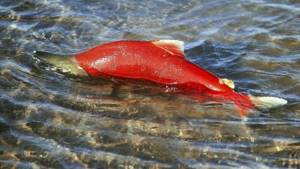
And although the term salmon is usually associated with red fish, many members of this family have white flesh. Seafood “exceptions” include whitefish and whitefish or nelma.
Each species of marine life has characteristics unique to it. This could be color, body and head shape, habitat, feeding habits, and even the color of the meat. However, this family has several characteristic features by which any of its representatives can be recognized.
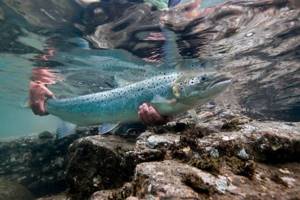
What do different species of fish of the subfamily have in common:
- There are rays on the fins, belly and back and never spines.
- There are always dark spots on the body. Depending on the type, they may be better or worse expressed.
- The skeleton does not ossify completely, so there is cartilage on the head.
- Ages and marine life are transparent.
- The belly is always lighter than the back.
- The jaws are very powerful and the teeth are sharp.
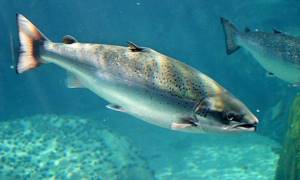
Product calorie analysis
SHARE OF BZHU IN CALORIES
Ratio of proteins, fats and carbohydrates:
Knowing the contribution of proteins, fats and carbohydrates to calorie content, you can understand how well a product or diet meets the standards of a healthy diet or the requirements of a certain diet. For example, the US and Russian Departments of Health recommend 10-12% of calories come from protein, 30% from fat and 58-60% from carbohydrates. The Atkins diet recommends low carbohydrate intake, although other diets focus on low fat intake.
If more energy is expended than it is received, the body begins to use up fat reserves, and body weight decreases.
Try filling out your food diary right now without registration.
Find out your additional calorie expenditure for training and get updated recommendations absolutely free.
DATE FOR ACHIEVEMENT OF THE GOAL
Atlantic salmon (salmon)
rich in vitamins and minerals such as: vitamin B1 - 15.3%, vitamin B2 - 13.9%, vitamin B5 - 32%, vitamin B6 - 40%, vitamin B12 - 100%, vitamin E - 12%, vitamin PP - 47%, potassium - 16.8%, phosphorus - 26.3%, iodine - 33.3%, cobalt - 200%, copper - 25%, selenium - 66.4%, chromium - 110%
- Vitamin B1
is part of the most important enzymes of carbohydrate and energy metabolism, providing the body with energy and plastic substances, as well as the metabolism of branched amino acids. A lack of this vitamin leads to serious disorders of the nervous, digestive and cardiovascular systems. - Vitamin B2
is involved in redox reactions, helps to increase the color sensitivity of the visual analyzer and dark adaptation. Insufficient intake of vitamin B2 is accompanied by impaired condition of the skin, mucous membranes, and impaired light and twilight vision. - Vitamin B5
is involved in protein, fat, carbohydrate metabolism, cholesterol metabolism, the synthesis of a number of hormones, hemoglobin, promotes the absorption of amino acids and sugars in the intestines, and supports the function of the adrenal cortex. A lack of pantothenic acid can lead to damage to the skin and mucous membranes. - Vitamin B6
is involved in maintaining the immune response, processes of inhibition and excitation in the central nervous system, in the transformation of amino acids, the metabolism of tryptophan, lipids and nucleic acids, promotes the normal formation of red blood cells, and maintaining normal levels of homocysteine in the blood. Insufficient intake of vitamin B6 is accompanied by decreased appetite, impaired skin condition, and the development of homocysteinemia and anemia. - Vitamin B12
plays an important role in the metabolism and transformation of amino acids. Folate and vitamin B12 are interconnected vitamins that are involved in hematopoiesis. A lack of vitamin B12 leads to the development of partial or secondary folate deficiency, as well as anemia, leukopenia, and thrombocytopenia. - Vitamin E
has antioxidant properties, is necessary for the functioning of the gonads and heart muscle, and is a universal stabilizer of cell membranes. With vitamin E deficiency, hemolysis of erythrocytes and neurological disorders are observed. - Vitamin PP
is involved in redox reactions of energy metabolism. Insufficient vitamin intake is accompanied by disruption of the normal condition of the skin, gastrointestinal tract and nervous system. - Potassium
is the main intracellular ion that takes part in the regulation of water, acid and electrolyte balance, and is involved in the processes of conducting nerve impulses and regulating blood pressure. - Phosphorus
takes part in many physiological processes, including energy metabolism, regulates acid-base balance, is part of phospholipids, nucleotides and nucleic acids, and is necessary for the mineralization of bones and teeth. Deficiency leads to anorexia, anemia, and rickets. - Iodine
is involved in the functioning of the thyroid gland, ensuring the formation of hormones (thyroxine and triiodothyronine). Necessary for the growth and differentiation of cells of all tissues of the human body, mitochondrial respiration, regulation of transmembrane transport of sodium and hormones. Insufficient intake leads to endemic goiter with hypothyroidism and slowing of metabolism, arterial hypotension, stunted growth and mental development in children. - Cobalt
is part of vitamin B12. Activates enzymes of fatty acid metabolism and folic acid metabolism. - Copper
is part of enzymes that have redox activity and are involved in the metabolism of iron, stimulates the absorption of proteins and carbohydrates. Participates in the processes of providing oxygen to the tissues of the human body. Deficiency is manifested by disturbances in the formation of the cardiovascular system and skeleton, and the development of connective tissue dysplasia. - Selenium
is an essential element of the antioxidant defense system of the human body, has an immunomodulatory effect, and is involved in the regulation of the action of thyroid hormones. Deficiency leads to Kashin-Beck disease (osteoarthritis with multiple deformities of the joints, spine and limbs), Keshan disease (endemic myocardiopathy), and hereditary thrombasthenia. - Chromium
is involved in the regulation of blood glucose levels, enhancing the effect of insulin. Deficiency leads to decreased glucose tolerance.
more hide
You can see the complete directory of the most useful products in the application.
The nutritional value
— content of carbohydrates, fats and proteins in the product.
Nutritional value of food product
- a set of properties of a food product, in the presence of which the physiological needs of a person for the necessary substances and energy are satisfied.
Vitamins
, organic substances required in small quantities in the diet of both humans and most vertebrates. Vitamin synthesis is usually carried out by plants, not animals. A person's daily requirement for vitamins is only a few milligrams or micrograms. Unlike inorganic substances, vitamins are destroyed by strong heat. Many vitamins are unstable and are “lost” during cooking or food processing.
Salmon is a predatory fish of the Salmon family, with dense scales of a silvery color. During the spawning period, the color of the fish becomes dark gray, and orange and red spots appear on the sides and head. Most salmon species are anadromous - they are born in fresh water, migrate to salt water sources, and return to fresh water to spawn.
Cooked salmon meat is quite fatty, but not high in calories, has a very delicate and juicy taste, is low in bone and is colored pink-red. The calorie content of salmon varies depending on the type of fish; for example, chicken salmon is much fattier and higher in calories than salmon. In nature, there are 23 species of salmon, including chum salmon, salmon, nelma, pink salmon, coho salmon and trout, which are most often used in cooking.
Regardless of how many calories are in salmon, this tasty and rather expensive fish is widely used in many dietary diets.
Useful properties of salmon
The benefits of salmon are due to their rich composition. Sea fish contains a lot of protein and fat, and the calorie content of salmon is only 172 kcal. This feature makes the fish truly unique. According to the BJU ratio, it contains 65.7% protein, 31.7% fat and 2.5% carbohydrates.

Useful composition:
- Easily digestible protein.
- Polyunsaturated fatty acids.
- Omega 3 and 6.
- Vitamins A, E, B and D.
- Amino acids, including essential ones
- Microelements: potassium, magnesium, phosphorus, iron, molybdenum and others.
Nutritional value:
- Fish is absorbed by the body by 98%, while for dietary rabbit meat this figure is only 90%.
- It contains a lot of protein and quite a large amount of fat, so it is extremely nutritious. The dishes quickly satisfy your hunger.
- Just 100 grams of red fish can cover 30% of the body's daily protein needs.
- Salmon meat is a real storehouse of vitamins, amino acids and microelements.
- Salmon caviar contains a large amount of “good” cholesterol. It helps reduce the amount of low-density lipoproteins, which are responsible for the formation of atherosclerotic plaques.

Due to its high protein content, fillet is recommended to be included in the menu for athletes who want to build muscle mass. Due to its rich protein and amino acid composition, regular consumption of fish promotes rapid regeneration of muscle fibers. That is why it is recommended to include it in their diet for people whose profession involves high physical activity.

Salmon to preserve beauty and youth:
- Regular consumption of fish dishes helps improve the condition of the skin, it acquires a healthy color and freshness. Vitamins and Omega-3 are responsible for this.
- Improving the condition of hair and nails. Thanks to the high content of vitamins A and E, hair acquires a healthy shine and nail brittleness is reduced.
- A combination of a protein diet including seafood and physical exercise will help get rid of cellulite and “tighten” your figure. Salmon is also very useful for weight loss.
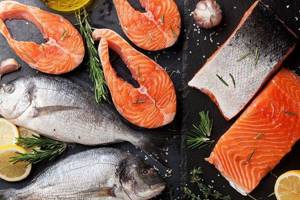
Sea fish contains a large amount of B vitamins, so it is incredibly beneficial for the nervous system. Polyunsaturated fatty acids stimulate mental activity, help increase stress resistance and stimulate the formation of new neural connections.
Benefits for the nervous system:
- Stimulation of brain activity. Regular consumption of fish improves learning ability.
- Increasing the body's resistance to stress. If you have a very nervous job, salmon will help you react more calmly to conflict situations.
- Restoration of nerve cells. Salmon is an excellent prevention of degenerative diseases of the nervous system.
- Salmon dishes are recommended to improve memory.
Red fish can be consumed by patients with atherosclerosis. It contains only “good” cholesterol, which reduces the concentration of low-density lipoproteins. This means that seafood can be considered a prevention of the formation of atherosclerotic plaques.
Due to its low carbohydrate content, people suffering from diabetes can include mogul salmon in their diet.
It is good for eye health. Contains large amounts of vitamin A or retinol. It is the lack of this substance that often becomes the main cause of vision impairment.
The nutritional value
Like all seafood, salmon is an exceptional source of high-quality, easily digestible protein, minerals, vitamins and, most importantly, Omega-3 fatty acids. Vitamins A, D, E and group B are also abundantly represented in this product, as are minerals such as selenium, phosphorus, zinc, calcium, and iron.
Nutritional value per 100 g raw product
| Calorie content | 231 kcal |
| Squirrels | 22 g |
| Fats | 14 g |
| Carbohydrates | 0 g |
| Cholesterol | 85 mg |
| Saturated fats | 3.2 g |
| EPK | 70 mg |
| DPK | 2140 mg |
| Vitamin A | 50 IU |
| Vitamin B2 | 0.3 mg |
| Vitamin B3 | 17.13 mg |
| Vitamin B6 | 1.6 mg |
| Vitamin B12 | 5.2 mg |
| Vitamin C | 4 mg |
| Vitamin D | 200 IU |
| Vitamin E | 2 mg |
| Phosphorus | 200 mg |
| Potassium | 485 mg |
| Sodium | 45 mg |
| Magnesium | 30 mg |
| Calcium | 20 mg |
| Selenium | 40 mcg |
| Iron | 1 mg |
| Zinc | 0.6 mg |
| Manganese | 20 mcg |
| Copper | 0.3 mg |
Tasty and healthy for children
For full growth and development, the child’s body needs proteins, vitamins, amino acids and minerals. Salmon can be considered a natural source of these beneficial components.
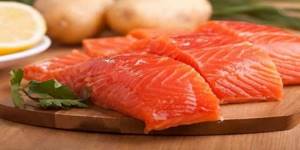
And if not every child agrees to take fish oil, sea fish is a completely different matter. Representatives of the salmon family are incredibly rich in retinol and vitamin D, so chopping can be used to prevent hypovitaminosis.
Benefits for children's bodies:
- It is a source of protein, amino acids and healthy fats, which are necessary for the full development of the muscular system and the functioning of internal organs.
- Fish contains a lot of calcium - the main “building material” for bones.
- Magnesium, potassium and phosphorus are essential for the healthy development of the cardiovascular system.
- B vitamins have a positive effect on mental abilities, stimulate brain function and improve memory.
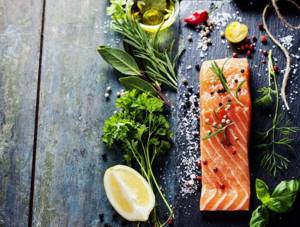
More on the same topic:
6 comments
- Roza Writes, And salmon is quite high in calories! I thought fish had fewer calories.
- Alena writes,
What is the calorie content of boiled salmon? - SergeyS writes,
About 160 kilocalories - Sonya writes:
Most often, salmon is eaten salted. The calorie content of salted salmon is about 270 kilocalories. - PtichkaPevichka90 Writes,
Salmon is considered a fatty fish, which is why its calorie content is as high as for fish. - Karina Writes,
By the way, fish diets are very popular, because by adhering to the diet developed for them, you can lose 3-5 kg of excess weight in 7-10 days. For such diets, fresh, low-fat fish is best suited. It is best to cook it without using olive or sunflower oil in the oven, grilled or steamed.
The benefits and harms of salmon sparkle
For a long time, salmon caviar was considered unsuitable for consumption. Until the end of the 19th century, it was simply thrown away along with its offal. The French “tasted” caviar. Over time, so-called caviar houses even began to appear in France. These establishments were very popular among the nobility. Caviar here was served on silver trays, and the tasting process itself became almost a ritual.
In Rus', caviar was an expensive delicacy that was brought from the East. Only rich nobles and individuals of royal blood could afford such pleasure.
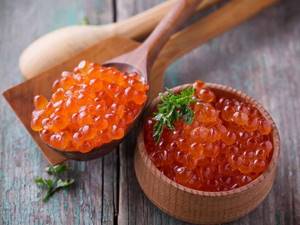
Today this product is considered a real delicacy. Appetizers with red caviar become an integral part of the festive table. A sandwich with butter and caviar has already become traditional. Seafood is also used to decorate fish and meat dishes.
Benefits of salmon caviar:
- Almost 30% of it consists of protein, which is perfectly absorbed by the body.
- Seafood contains a lot of healthy fats and amino acids, which are necessary for the full functioning of all organs and systems.
- Due to the large amount of vitamins in the composition, it strengthens the immune system and increases the body's resistance to stress.
- Omega-3 stimulates brain activity and improves memory. It is this substance that helps preserve youth and beauty.
- Due to the high content of retinol, it can be used to prevent hypovitaminosis A.
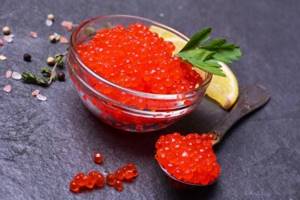
Contraindications and features of consuming salmon caviar:
- For individual intolerance to seafood.
- For hypertension and urolithiasis, it is not recommended to consume too much caviar due to its high salt content.
- Due to the high content of fats, proteins and amino acids, red caviar should be consumed in doses, no more than five teaspoons per day, otherwise digestive problems may occur.
Salmon milk
This part of the fish is considered a specific delicacy. Some people are prejudiced against milk and simply throw it away. But in Finland, this part of the fish has the same nutritional value as caviar.
Salmon milk contains not only vitamins and microelements, but also substances that improve immunity.
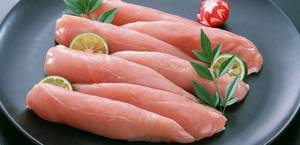
Benefits of salmon milk:
- It is a source of protein that is easily absorbed by the body.
- Few people know, but milk is a natural aphrodisiac that stimulates potency.
- The seminal glands contain large amounts of protein and iron, so their regular use increases hemoglobin and stimulates hematopoiesis.
The calorie content of milk is lower than that of caviar. One hundred grams contains only 100 kcal. But this part is very salty, so you won’t be able to eat too much of it anyway.
Steamed salmon in a slow cooker: calorie content, recipes with photos, how to cook
The dish is not only tasty, but also healthy for the body. Baked fish in a slow cooker retains all the beneficial substances and elements. Cooking salmon is easy, but it is important not to add a lot of spices, since the fish itself is very tender and has a wonderful taste.
Suitable marinades
A simple way to marinate salmon is to rub it with a mixture of salt and ground black pepper, then sprinkle a little lemon juice on it. You can mix lime juice, soy sauce and mustard. The marinade turns out very tasty and unusual.
IMPORTANT! Seasonings for fish are excellent for salmon, which consist of the most suitable spices for it: dill, cilantro.
Fish can be cooked in the “steam”, “baking”, “frying” modes. Potatoes, rice, tomatoes, broccoli, and buckwheat are baked with seafood. Detailed recipes with photos can be found on the Internet.
An excellent marinade is obtained using the following recipes:
- Mix 60 grams of balsamic vinegar, 3 cloves of garlic, 45 ml of olive oil, rosemary, paprika, ginger.
- In a bowl, combine 30 ml of honey, a spoonful of mustard, lemon juice, pepper and salt.
Preparing food and utensils for baking
Red fish soup recipe
Before baking fish, you need to prepare everything you need:
- Take out a cutting board, knife, marinating container, and multicooker.
- Rinse the salmon fillet, wait until it dries and cut into portions.
- Rub the seafood with salt, spices or prepare a marinade and leave the fish in it for 2 hours.
Recipe No. 1
Steamed salmon in a slow cooker turns out very tender, tasty, and retains nutrients. The dish is useful for those people who are on a diet. After all, its calorie content is low.
What you will need:
- fish fillet – 500 gr.,
- orange juice - one glass,
- garlic – 1 tooth,
- dill – 1 bunch,
- mustard – 1 small spoon,
- water – 100 ml,
- soy sauce - 2 large spoons,
- salt - to taste.
Step by step recipe:
- Finely chop the garlic with a knife or pass through a garlic press.
- Mix juice, sauce and mustard in a bowl.
- Add garlic, finely chopped dill. Stir thoroughly. The salmon marinade is ready.
- Cut the fillet into pieces, wash and dry.
- Add salt and immerse in marinade. Leave to soak for one and a half hours.
- Place salmon meat in a bowl, add water, close the lid.
- Select the “baking” mode, time – half an hour.
IMPORTANT! Boiled rice, Tartar sauce, and fresh vegetable salad go well with fish.
Recipe No. 2: Steamed fish
The main advantage of this method of preparation is the preservation of all vitamins and microelements.
Products:
- fish fillet – 1 kg,
- lemon juice,
- vegetable oil – 4 tbsp. l.,
- rosemary – 1 tbsp. l.,
- salt pepper,
- mustard – 1 large spoon.
A good side dish for this dish would be boiled potatoes.
Step by step recipe:
- Spread the salmon pieces with mustard.
- Add salt and pepper and pour juice on top.
- Leave the fish to marinate for 30 minutes.
- Pour 3 glasses of water into the multicooker container and place the steaming utensils on top.
- Place the fillet and coat with oil.
- Press the "steam" button. Leave to cook for 25 minutes.
Recipe No. 3: Salmon with shrimp
Fish and shrimp are an excellent combination. Those who watch their weight will love the dish.
Grocery list:
- salmon – 500 gr.,
- peeled shrimp – 150 gr.,
- tomatoes - 2 pieces,
- salt,
- pepper,
- seasonings
How to cook:
- Cut the fish meat into strips. Tomatoes - cubes.
- Place seafood and tomatoes in a bowl. Salt, pepper, add seasonings.
- Steam bake in foil for 45 minutes.
Place the cooked steamed fish on a dish and garnish with cherry tomatoes. The calories in the dish are 155 kcal per 100 grams.
Recipe No. 4: Fish with rice
The grits are an ideal side dish for salmon.
Compound:
- salmon – 600 gr.,
- unsweetened yogurt – 100 gr.,
- hard cheese – 100 grams,
- lemon juice,
- steamed rice - 1 cup,
- carrots – 1 pc.,
- water – 2 tbsp.,
- frozen peas – 150 gr.,
- dried tomatoes,
- greenery,
- seasonings,
- salt.
Step by step recipe:
- Pass the cheese through a fine grater and place in a bowl.
- Pour in yogurt and juice and stir.
- Add finely chopped dill to the food and sprinkle with pepper.
- Place the fish pieces in the marinade and leave for 2 hours.
- Cut the carrots into cubes.
- Place rice, peas, and carrots in the multicooker bowl.
- Pour in spices, add tomatoes, salt.
- Pour water over the ingredients and stir everything.
- Line a steaming container with a sheet of foil and place the steak. Cook for 50 minutes.
A delicious dish is ready to be served.
Red salmon in a slow cooker is healthy, and steamed salmon retains maximum nutrients and elements. Be careful when cooking when choosing spices. Do not overdo it, otherwise the taste of the fish will be lost. Salt and pepper are enough.
As you can see from the material, steaming salmon is very simple and easy. The dish will delight you with its taste, nutritional value, and calories. Red meat is perfect for any holiday table. It will be amazing combined with vegetables. Salmon is also delicious when baked with rice.
Loading…
Source: https://berlogakarelia.ru/vidyi-ryib/losos-na-paru-v-multivarke
The benefits and harms of smoked salmon
Smoked meat has a spicy taste with a distinct hint of smoke. At the same time, the characteristic taste of the fish is preserved. During the smoking process, carcasses lose moisture and become saturated with smoking substances, which not only change the taste of the seafood, but also act as an antiseptic.
You can cook fish using hot and cold smoking. The first option involves treating with smoke at temperatures up to +60°C. Carcasses are usually smoked for several hours. The duration of processing depends on the size of carcasses or fish pieces.
Salmon are also processed using the cold smoking method:
- First, the carcasses are salted. For this, dry salt or brine can be used.
- After this, the fish is placed in smoking chambers and treated with smoke at a temperature of no more than 20°C.
- Seafood is preserved using this method for several days.
The taste of smoked meats will vary slightly. With hot smoking, the smoke is felt much stronger, and with cold smoking, the product’s own flavor is retained more. The type of wood used greatly influences the taste of smoked meats.
Compared to fresh, smoked fish is less fatty. But this has less to do with the processing method itself and more to do with the choice of carcass parts. Lean parts of the fillet are best suited for smoking. The average calorie content of smoked meat is 153 kcal.
Smoked products are no less healthy than boiled or baked ones. The fact is that with this method of preservation the carcasses are not exposed to too high temperatures. This means that the rich composition of the product is preserved almost completely.
Recipe? Recipe!
How can you cook this fish? Here are some recipes:
Salmon fried in dough:
Products:
- Salmon fillet – 500 gr.
- Flour - 1 cup
- Eggs - 1 piece
- Light beer – 1 half glass
- Juice from half a lemon
- Salt - to taste
- Vegetable oil - for frying
The fish is rinsed, cut into portion strips, salted and sprinkled with lemon juice. Flour, eggs, beer and salt are mixed to form a dough. Leave the dough for 1 hour. Strips of fish are rolled in flour, each strip is dipped in the prepared dough and placed in a container with boiling oil so that the fish floats in it. Fry portions in oil until cooked.
Serve with fluffy rice or flour products and tomato sauce. It goes without saying that the calorie content of salmon prepared in this way will be greater than, say, steamed or boiled salmon.
Salmon with mustard baked in oatmeal:
Products:
- Oat flakes (traditional “Hercules”) - 4 tablespoons
- Salmon (2 steaks) – 200 g
- Mustard (Dijon) - 2 tablespoons
- Vegetable oil - 1 tablespoon
- Salt - 1/2 teaspoon
- Seasoning (ground black pepper) - 1/4 teaspoon
- Lettuce (leaf)
For ease of preparation, cover the baking sheet with foil. Take the salmon steaks and place them on a greased baking sheet.
Salt, pepper and grease the fish with mustard.
Take oatmeal and generously sprinkle the fish with the flakes.
Place the baking sheet in an oven preheated to 180 degrees for 20 minutes to bake.
Serve the finished fish on lettuce leaves. Bon appetit!
How is salmon good for weight loss?
It may seem strange that a fish as fatty as salmon can be used in the fight against excess weight. However, no one says that there is a salmon diet: this fish is used only as an additional stimulant and an effective assistant in losing weight.
The fact is that salmon meat, a rich source of omega-3, not only improves the condition of the skin, but also speeds up metabolism, which inhibits the formation of cellulite and fat deposition in general.
The principle of operation is based on the fact that the thyroid gland, in order to regulate all metabolic processes, requires a certain amount of iodine every day, which is exactly contained in one serving of salmon. Eating salmon at least 2 times a week will not only help you successfully get rid of extra pounds, but also do it in a good mood.
Of course, you need to remember that eating salmon does not mean cooking it in a frying pan with a lot of oil: every tablespoon of this fat increases the “weight” of the dish by 60 kcal. Low-calorie methods are desirable: use a grill or steamer. If you want to marinate the fish before cooking, pay attention to the content of sugar, sauce, and wine in the marinade: they can ruin your attempt to cook healthy food.
Is canned salmon healthy?
Today, store shelves offer a large selection of canned salmon products. The preparations are not cheap, just like the red fish itself. Contrary to a lot of common myths and doubts associated with canned seafood, they are best preserved in this form. After all, it is subjected to heat treatment under sterile conditions, and a vacuum is created inside the can. This means that bacteria will not grow in the food product.
All canned seafood options can be divided into three groups:
- In oil, the product is very tasty, but quite high in calories. It goes great with cream cheese.
- In its juice - an ideal option for those who adhere to proper nutrition. The calorie content is low, and the characteristic taste is preserved as much as possible.
- In tomato sauce. The specific taste of salmon goes well with the sweet and sour notes of tomatoes.
Canned seafood will be no less healthy than fresh frozen or smoked. Thanks to heat treatment, they do not contain bacteria or parasites that can harm the body.
Salmon harm and contraindications:
- Sea fish should not be consumed by people with allergies or individual intolerance to seafood.
- Should not be consumed raw. It may contain helminths. To avoid infection by parasites, carcasses must be heat treated. They can be frozen to -35°C or cooked at +65°C. Special culinary thermometers are used to control the temperature.
- Hot smoked dishes should be consumed with caution. Like all smoked foods, it contains a certain amount of carcinogens.
- Fillet is capable of accumulating heavy metals, so you can only eat carcasses or steaks of fish caught in environmentally safe areas.
- Due to the high salt content, it should also not be abused by people suffering from hypertension and urolithiasis.
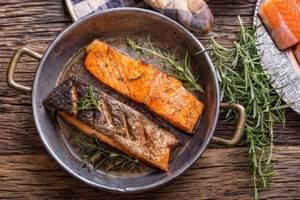
Salmon is a healthy product. And when prepared correctly, it is also incredibly tasty. However, a lot depends on its freshness. It is very important to choose a really fresh carcass, and not one that has already begun to deteriorate. The quality of marine life can be determined by several criteria.
The first is the aroma. If you smell an ammonia, spicy or too strong fishy odor, it is better not to buy such a carcass. Fresh meat does not have a very pronounced slight odor.
The second sign is the appearance of an opaque film. If you see a thin whitish film on the pulp, it means the product is spoiled and should not be eaten.
The third point is consistency. Salmon are elastic and quite hard. If the muscle fibers in the hands disintegrate, it means that the carcass is no longer suitable for consumption.
How to determine freshness by the eyes
- All salmon species will have slightly bulging, round eyes. They should not look sunken or flattened.
- Fresh fish's eyes are bright and clear, there are no cloudings, spots or whitish films.
- The dark pupil is clearly visible; it has the shape of a regular circle.

The fifth “marker” of freshness is color. It should always be bright pink or bright orange. If it seems to you that the muscle fibers are somehow dull or faded, you should not purchase such a steak. Also pay attention to the presence of thin white lines that run along the entire flesh. Unlike a film that completely covers fish pieces, there should be thin snow-white lines.
The sixth sign is a slimy texture. Regardless of the preservation method and type of packaging, there should be no mucus on the surface of the fillet or carcass under any circumstances. This symptom usually accompanies the salmon losing its firm texture. This means that the fish began to spoil long ago.
It often happens that it is only at the cooking stage that you suspect something is wrong. Usually the sour aroma of the prepared dish causes doubts. There shouldn't be such a smell. If you hear it, feel free to throw away the red fish; if spoiled, it will do more harm than pleasure or benefit.
To avoid having to throw away an expensive product, you should buy it in trusted stores. You can order high-quality fresh salmon without any defects or damage in the Frost-Fish online store. Our catalog presents only the highest quality seafood caught in environmentally friendly regions. We have red fish of different types. You can order whole carcasses, fillets or canned goods.
We strictly follow the rules for storing fish, so you get truly tasty and healthy products for your favorite dishes.
Return to list
Selection rules
There are some rules that are important to consider when purchasing.
You need to choose not frozen fish, but chilled fish, in order to avoid buying low-quality goods. You have to smell the salmon. It should be odorless.
Many people mistakenly believe that a product should smell like fish. There should actually be a slight smell, reminiscent of the salty sea. This indicates the freshness of the product.
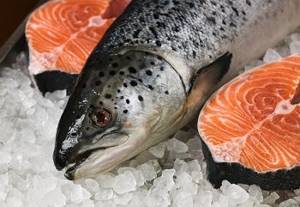
The salmon should have a pale pink hue. If it is lighter, this indicates that the product has already been frozen and thawed several times.
If the product has a bright red tint, it means that dyes have been added to the fillet. A reddish-brown hue indicates that the salmon is old.
It is better to buy fish straight away. This will guarantee that it is fresh. Stale or spoiled fish have cloudy eyes, while fresh fish have transparent eyes.
It is worth pressing the carcass with your finger. If the product is of good quality, the pit will disappear quickly.
The carcass should not be too large. Caught in the wild, it is medium in size.
If the fish is large and bred on farms, then it is possible that the meat contains harmful substances, heavy metal salts and parasites.
Farm produce has white streaks when the belly is cut. Farmed fish is available for sale all year round. Wild salmon - from February to August.
If the product has undergone heat treatment, it is sold only in vacuum packaging. It should indicate the composition of only 2 ingredients: fish and salt. If there is water in the package, this indicates that the product is stale.
